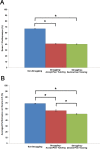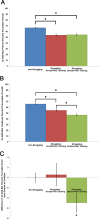Helping struggling students in introductory biology: a peer-tutoring approach that improves performance, perception, and retention
- PMID: 25976652
- PMCID: PMC4477732
- DOI: 10.1187/cbe.14-08-0120
Helping struggling students in introductory biology: a peer-tutoring approach that improves performance, perception, and retention
Abstract
The high attrition rate among science, technology, engineering, and mathematics (STEM) majors has long been an area of concern for institutions and educational researchers. The transition from introductory to advanced courses has been identified as a particularly "leaky" point along the STEM pipeline, and students who struggle early in an introductory STEM course are predominantly at risk. Peer-tutoring programs offered to all students in a course have been widely found to help STEM students during this critical transition, but hiring a sufficient number of tutors may not be an option for some institutions. As an alternative, this study examines the viability of an optional peer-tutoring program offered to students who are struggling in a large-enrollment, introductory biology course. Struggling students who regularly attended peer tutoring increased exam performance, expert-like perceptions of biology, and course persistence relative to their struggling peers who were not attending the peer-tutoring sessions. The results of this study provide information to instructors who want to design targeted academic assistance for students who are struggling in introductory courses.
© 2015 Z. Batz et al. CBE—Life Sciences Education © 2015 The American Society for Cell Biology. This article is distributed by The American Society for Cell Biology under license from the author(s). It is available to the public under an Attribution–Noncommercial–Share Alike 3.0 Unported Creative Commons License (http://creativecommons.org/licenses/by-nc-sa/3.0).
Figures





References
-
- American Association for the Advancement of Science (2011) Vision and Change in Undergraduate Biology Education: A Call to Action. Washington, DC:
-
- Bloom BS, Englehard MD, Furst EJ, Hill WH, Krathwohl DR. Taxonomy of Educational Objectives: The Classification of Educational Goals: Handbook I, Cognitive Domain. New York: David McKay; 1956.
-
- Born WK, Revelle W, Pinto LH. Improving biology performance with workshop groups. J Sci Educ Tech. 2002;11:347–365.
-
- Chasteen SV, Pepper RE, Caballero MD, Pollock SJ, Perkins KK. Colorado Upper-Division Electrostatics diagnostic: a conceptual assessment for the junior level. Phys Rev Spec Top Phys Educ Res. 2012;8:020108.
-
- Chen X, Soldner M. STEM Attrition: College Students’ Paths into and out of STEM Fields. Washington, DC: National Center for Education Statistics; 2013.
Publication types
MeSH terms
LinkOut - more resources
Full Text Sources
Other Literature Sources
Research Materials

